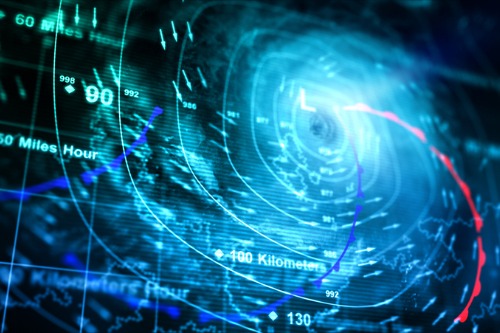

Small businesses face many challenges when a hurricane is on the horizon that can put a strain on their operations as well as expose their employees to risks.
“Post-storm, there’s a whole slew of industries that get overwhelmed, like roofers, tree companies, hotels, grocery stores, and gas stations,” said Brad Wilkins, senior loss control specialist at AmTrust North America, adding that the crush of business activity puts stress on every part of a business’s operation, from the back room to the front office.
“We know from experience that when employees start rushing, shortcuts get taken and they’re setting themselves up for injuries,” explained Wilkins, pointing to other companies, such as trash haulers and water damage restoration firms, who get a ton of requests for a long time after the storm passes through. “It’s not just for a matter of days or weeks – this changes their whole business cycle.”
Environmental issues can also put employees working in areas impacted by hurricanes at risk. These exposures come primarily from polluted water that can contaminate the air and lead to mold. Having a plan in place to go into areas that have been compromised environmentally is key, but even for those workers not exposed to environmental risks, being proactive before a hurricane strikes is the best way to mitigate injuries as well as keep a business on track and prevent staff from becoming overwhelmed.
“When a large storm comes through, it affects and shuts down entire communities, and one in four businesses that has to close for at least 24 hours [because of] a disaster never reopens,” said Wilkins. “That’s really a staggering statistic, especially when we consider that hurricanes and other large weather events cause huge power outages that can shut businesses down for many days or even many weeks.”
Business continuity plans put steps in place so that a small business can resume operations in another location or by telecommuting, in turn maintaining customer relationships. A plan like this also keeps the most important part of a business – its people – out of harm’s way.
“Say a storm is approaching – it’s super important for employers to encourage their own workers to have their own emergency plans in place at home to protect their families and their own property. Not only is it the right thing to do, but business owners are going to do well to understand that employees are going to consider their families a first priority in a time of disaster, and that employees are going to be unlikely to report to work if they feel their families or their homes are being threatened,” said Wilkins.
Communication should likewise be at the top of the list for a business. They should know to set up clear, visible communication channels, such as dedicated phone lines with up-to-date recorded messages, according to the AmTrust expert.
“Those lines should also point to a way that employees can provide their own statuses if they’re OK or if they’re able to travel,” he said. “And [in terms of] best practices, it’s always good to have these communication channels redundant so that there’s not just one. You can have a phone, you can have social media, you can have a company intranet, and these can all be used to let employees know when they should report to work, who to contact if they can, or who to ask questions to.”
Emergency plans don’t just account for the physical. Decision-makers within a business need to be identified, so they can do things like back-up data offsite and set up cloud systems, all of which need to be planned in advance of a weather event.
“The thing with disasters is that employers need to put their resources in place well before a storm, so that the process is well thought-out and safety is built in. Reacting when an event is on the horizon is almost always not a good idea. Being ready and knowing where you’re going to have to move equipment and inventory records, and handle your people to keep them away from wind and water and out of harm’s way is the way to do that,” explained Wilkins. He highlighted resources from FEMA, such as table-top exercises that take employers through storm scenarios, as a great way to identify the strengths and weaknesses in businesses’ emergency plans.
AmTrust also offers risk mitigation resources for businesses in the path of natural catastrophes.
“AmTrust has a full-fledged section on weather preparedness, and it covers all types of weather across the country. It’s a good place to go to find manuals that have checklists, sample procedures, and practice scenarios because it’s all about being proactive,” said Wilkins, mentioning a cautionary tale about why emergency planning is so vital.
“I was personally involved [in an accident] when I was on the claims side. We had a healthcare facility that was a large non-profit which cared for the developmentally disabled, and they didn’t evacuate. The employees were looking out of an unprotected window watching the storm advance, and a blown object shattered this very large glass window and injured multiple people, and one of them very seriously, who had to have multiple eye surgeries. These are the kinds of things that can be prevented by having plans in place ahead of time.”
